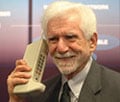Custom and Priority queueing
in CCNP
Could someone give me an example of Custom Queueing on a serial interface vs. Priority Queueing? I'm new to these concepts and don't quite get it. My book bites when it comes to telling you *how* to do it, not just what it is.
Thanks.
Thanks.
"Computers in the future may weigh no more than 1.5 tons." - Popular Mechanics, 1949
Comments
-
 dtlokee
Member Posts: 2,378 ■■■■□□□□□□
What book are you using? CQ and PQ are typically not used anymore with the more flexible CBWFQ and LLQ methods that are available.The only easy day was yesterday!
dtlokee
Member Posts: 2,378 ■■■■□□□□□□
What book are you using? CQ and PQ are typically not used anymore with the more flexible CBWFQ and LLQ methods that are available.The only easy day was yesterday! -
 Crunchyhippo
Member Posts: 389
Well, I'm using the Cisco ONT book, but this is for my lab exercise, which is probably wanting me to have some exposure to CQ and PQ.
Crunchyhippo
Member Posts: 389
Well, I'm using the Cisco ONT book, but this is for my lab exercise, which is probably wanting me to have some exposure to CQ and PQ.
Specifically, for CQ it says:
"Configure custom queuing on R1's serial interface. Place each traffic stream in its own queue but do not customize any parameters of it. (The port numbers configured for the NQR streams are TCP ports 23, 21, 119, 22, and 6000). Run the NQR streams and compare results as you did before."
For PQ:
"Configure priority queuing on R1 on the serial interface facing R2. Assign one of the application protocols in use to the high priority queue, one to the medium pqueue, one to the normal queue, and make the low priority queue the default queue. Run the NQR streams and compare results as you did before.""Computers in the future may weigh no more than 1.5 tons." - Popular Mechanics, 1949 -
 dtlokee
Member Posts: 2,378 ■■■■□□□□□□
Try this link:
dtlokee
Member Posts: 2,378 ■■■■□□□□□□
Try this link:
http://www.cisco.com/univercd/cc/td/doc/product/software/ios122/122cgcr/fqos_c/fqcprt2/qcfconmg.htm#wp1000934
As for what the lab is trying to get you to do is place different types of traffic into the different queues (up to 16 for CQ and 4 for PQ)The only easy day was yesterday! -
 Crunchyhippo
Member Posts: 389
The link helped considerably. Here are some questions I was given that I didn't know the answer to , though:
Crunchyhippo
Member Posts: 389
The link helped considerably. Here are some questions I was given that I didn't know the answer to , though:
1. What is the DSCP binary value for EF?
2. What is the DSCP decimal value for EF?
3. Which packet normally has priority, one that has a ToS byte of 1010 0000 or one that has a
DSCP name of AF33?
4. If a packet is marked as CS3 and another one is CS5. Which one is more likely to be
dropped?"Computers in the future may weigh no more than 1.5 tons." - Popular Mechanics, 1949 -
 dtlokee
Member Posts: 2,378 ■■■■□□□□□□
1. 101110 (the whole ToS byte would be 10111000)
dtlokee
Member Posts: 2,378 ■■■■□□□□□□
1. 101110 (the whole ToS byte would be 10111000)
2. 46
3. 1010 0000 = CS5 so it would have priority over AF33 (althought it can be configured the other way)
4. CS3The only easy day was yesterday! -
 Crunchyhippo
Member Posts: 389
dtlokee wrote:1. 101110 (the whole ToS byte would be 10111000)
Crunchyhippo
Member Posts: 389
dtlokee wrote:1. 101110 (the whole ToS byte would be 10111000)
2. 46
3. 1010 0000 = CS5 so it would have priority over AF33 (althought it can be configured the other way)
4. CS3
Ok, that makes sense.
I'm still trying to figure out the differences between AF and CS; if you're given a binary number, how do you know if it's an AF or a CS (an EF can only be one thing, so I know that part)?"Computers in the future may weigh no more than 1.5 tons." - Popular Mechanics, 1949 -
 dtlokee
Member Posts: 2,378 ■■■■□□□□□□
AF will typically have 6 bits in use, the Class Selector (CS) and the Drop Probability. so if you had something like:
dtlokee
Member Posts: 2,378 ■■■■□□□□□□
AF will typically have 6 bits in use, the Class Selector (CS) and the Drop Probability. so if you had something like:
101000 = CS5 there is no AF value for this it is knows as CS5
Where a value like:
011010 = AF31 which would be Class Selector 3 low drop probability.
The odd thing about the AF values is the higher the first number the more critical the traffic is, but the lower the second number is the lower the drop probability will be, so AF33 will be dropped before AF31 but they would both be dropped before AF43. It's confusing, and totally depends on how you configure the policy maps but all the defaults will work in this fashion. You could configure your network to give priority to CS1 and define EF as high drop, it's up to you (although such a design will require more manual configuration and will confuse the hell out of anyone who needs to troubleshoot it.)The only easy day was yesterday! -
 Crunchyhippo
Member Posts: 389
Ahhhhh! [Lightbulb moment]
Crunchyhippo
Member Posts: 389
Ahhhhh! [Lightbulb moment] "Computers in the future may weigh no more than 1.5 tons." - Popular Mechanics, 1949
"Computers in the future may weigh no more than 1.5 tons." - Popular Mechanics, 1949












